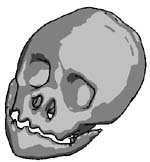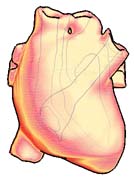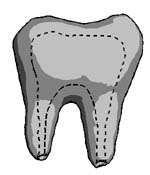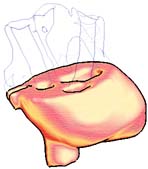Volume Modeling Project




The goal of this project is to provide an intuitive interface to edit
three-dimensional volumetric model of an object, in addition to
its surface information.
We extended the Teddy
system to enable dynamically changing topology so far.
Changing Topology in Our System

|
Multiple contours can be specified in Creation.
|
 
|
Dig a piercing hole by inward extrusion.
|
  
|
Internal cavity is specified by virtual cut and internal extrusion.
|
  
|
Multiple contours on a surface are swept by drawing single open stroke.
|
  
|
Virtual cut enables access to the internal surface.
|
Future work
Though the current system uses voxels as its underlying data structure,
the output is surface models. We aim at modeling internal textures
in the unified framework.
Publication
Shigeru Owada, Frank Nielsen, Kazuo Nakazawa, and Takeo Igarashi,
"A Sketching Interface for Modeling the Internal Structures of
3D Shapes", Smart Graphics 2003, Lecture Notes in Computer Science (LNCS)
vol.2733, pp.49-57, Springer-Verlag
PDF
大和田 茂,フランク・ニールセン,中沢 一雄,五十嵐 健夫
"スケッチベース ボリュームモデリング",
情報処理学会 グラフィクスとCAD 研究報告 No.112, 2003-CG-112,pp.35-40,2003
PDF
Video 1 in wmv (10.6MB)
Video 2 in wmv (9.7MB)
Abstract : This paper presents a sketch-based modeling system for creating objects
that have internal structures.
The user input consists of hand-drawn sketches and the system automatically
generates a volumetric model.
The volumetric representation solves any self-intersection problems
and enables the creation of models with a variety
of topological structures, such as a torus or a hollow sphere.
To specify internal structures, our system allows the user to cut
the model temporarily and apply modeling operations to the exposed face.
In addition, the user can draw multiple contours in the Create or Sweep stages.
Our system also allows automatic rotation of the model so that the user
does not need to perform frequent manual rotations.
Our system is much simpler to implement than a
surface-oriented system because no complicated mesh editing code is required.
We observed that novice users could quickly
create a variety of objects using our system.